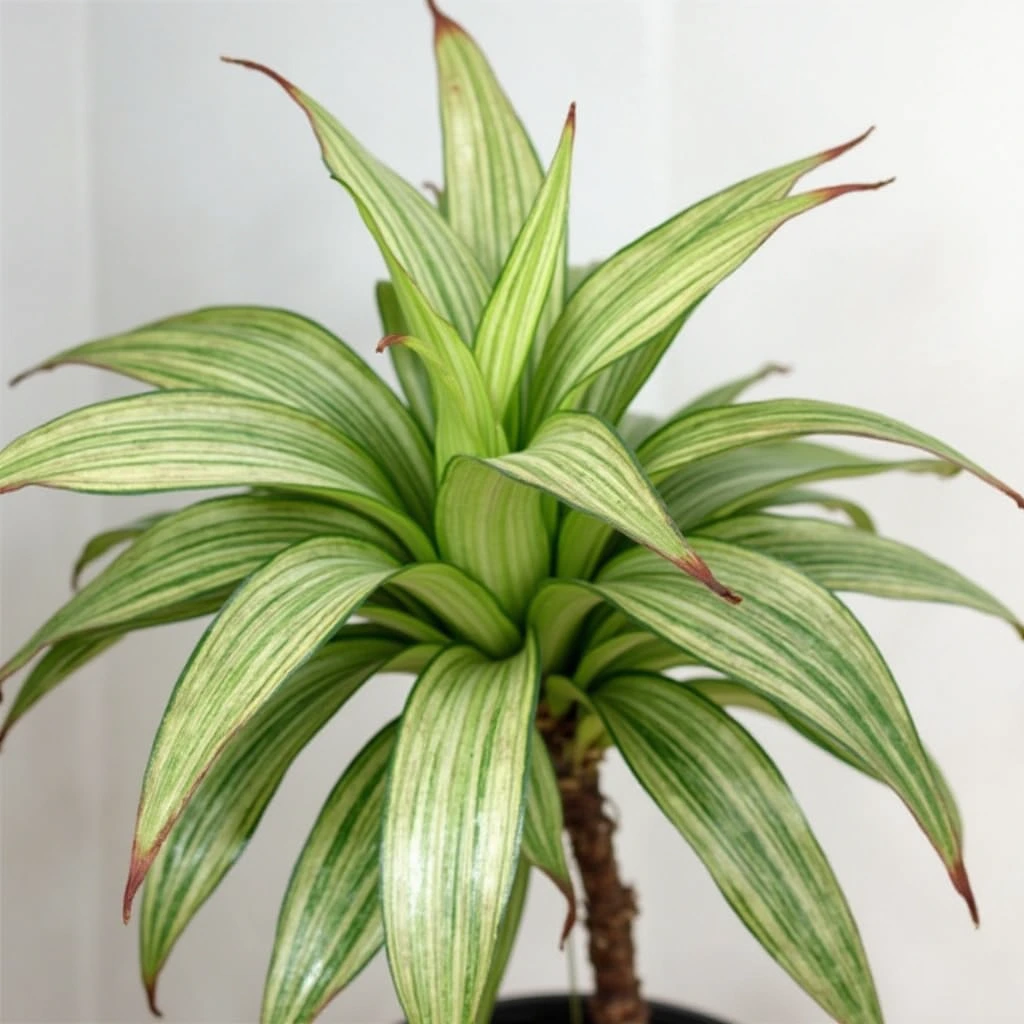Seeing your houseplant leaves develop brown, crispy edges can be frustrating. This issue is common and usually results from improper watering, low humidity, or mineral buildup in the soil. Fortunately, with a few simple adjustments, you can restore your plant’s health and prevent further damage.
In this guide, we’ll explore the causes, solutions, and best practices to keep your houseplants lush and vibrant.
Why Do Houseplant Leaves Turn Brown?
Browning leaf edges are usually a sign of stress. Here are the most common causes:
1. Watering Issues: Too Much or Too Little
- Underwatering: When a plant doesn’t receive enough moisture, its leaves become dehydrated, leading to browning edges.
- Overwatering: Excessive watering can cause root rot, preventing the plant from absorbing nutrients properly.
💡 Solution: Always check the soil before watering. If the top inch of soil is dry, it’s time to water. Using a moisture meter can help determine the best schedule for your plant’s needs.
2. Poor Water Quality & Salt Buildup
Using hard water or fluoride-treated tap water can lead to brown tips, especially in sensitive plants like Spider Plants and Dracaenas. Minerals build up in the soil over time, making it difficult for roots to absorb water.
💧 To prevent this, use filtered, rainwater, or distilled water. You can also flush your soil monthly to remove excess minerals. Learn more about improving water quality for houseplants.
3. Low Humidity Levels
Many houseplants, especially tropical varieties, require high humidity. When indoor air is too dry, leaf edges can become crispy and brown.
To maintain proper humidity:
- Use a humidifier near your plants.
- Place a pebble tray with water beneath the plant’s pot.
- Lightly mist your plants in the morning.
If you notice your plants suffering from dry air, check out these best humidity-boosting techniques for houseplants.
How To Prevent Brown Leaf Edges on Houseplants
Now that we understand the causes, let’s explore some effective prevention strategies.
1. Use Proper Watering Techniques
- Water deeply but infrequently to encourage strong root growth.
- Ensure pots have drainage holes to prevent overwatering.
- Adjust your watering schedule based on seasonal changes.
2. Choose the Right Type of Water
- Use distilled, filtered, or rainwater for sensitive plants.
- If using tap water, let it sit overnight to allow chlorine and fluoride to evaporate.
- Avoid water softeners, as they add excess sodium, which harms plants.
3. Maintain Proper Humidity
- Keep plants away from heaters, air vents, and fans, which dry out the air.
- Group plants together to create a micro-humid environment.
- Use a humidity gauge to monitor indoor moisture levels.
4. Prevent Salt Buildup in the Soil
- Avoid over-fertilizing, as excess nutrients cause fertilizer burn.
- Flush the soil with distilled water monthly to remove excess minerals.
- Use a balanced organic fertilizer suitable for houseplants.
If your soil already has a buildup of salts, here’s a guide on how to flush it out.
5. Protect Plants from Temperature Stress
- Keep plants away from drafty windows, air conditioners, or radiators.
- Maintain room temperatures between 65-75°F (18-24°C) for most houseplants.
- Use sheer curtains to filter direct sunlight, preventing leaf scorch.
Quick Fixes for Already Brown Leaf Tips
If your plant already has brown edges, here’s what you can do:
- Trim the brown parts using sharp, sanitized scissors to prevent further damage.
- Check your watering routine and adjust based on your plant’s needs.
- Increase humidity with misting, pebble trays, or a humidifier.
- Flush the soil with filtered water to remove excess salts and fertilizer buildup.
Frequently Asked Questions (FAQ)
1. Should I cut off brown leaf tips?
Yes, trimming the brown edges won’t harm your plant and can improve its appearance. However, ensure you address the underlying cause first.
2. How often should I water my houseplants?
Most houseplants thrive when watered once the top inch of soil dries out. Use a moisture meter for accuracy.
3. Can too much sun cause brown leaf tips?
Yes! Leaf scorch happens when plants receive too much direct sunlight. Move them to a bright, indirect light spot.
4. How do I increase humidity for my plants?
- Use a humidifier.
- Place plants on a pebble tray with water.
- Group plants together to create a humidity pocket.
5. What’s the best type of fertilizer to prevent brown tips?
Use a balanced, water-soluble fertilizer every 4-6 weeks during the growing season. Avoid over-fertilizing, as it can cause salt buildup.
Final Thoughts
Preventing brown leaf tips is all about creating the right conditions for your houseplants. By maintaining proper watering, humidity, and nutrient balance, your plants will stay healthy and vibrant.
With these easy fixes, your houseplants will thrive—no more worrying about crispy, brown edges! 🌿💚
